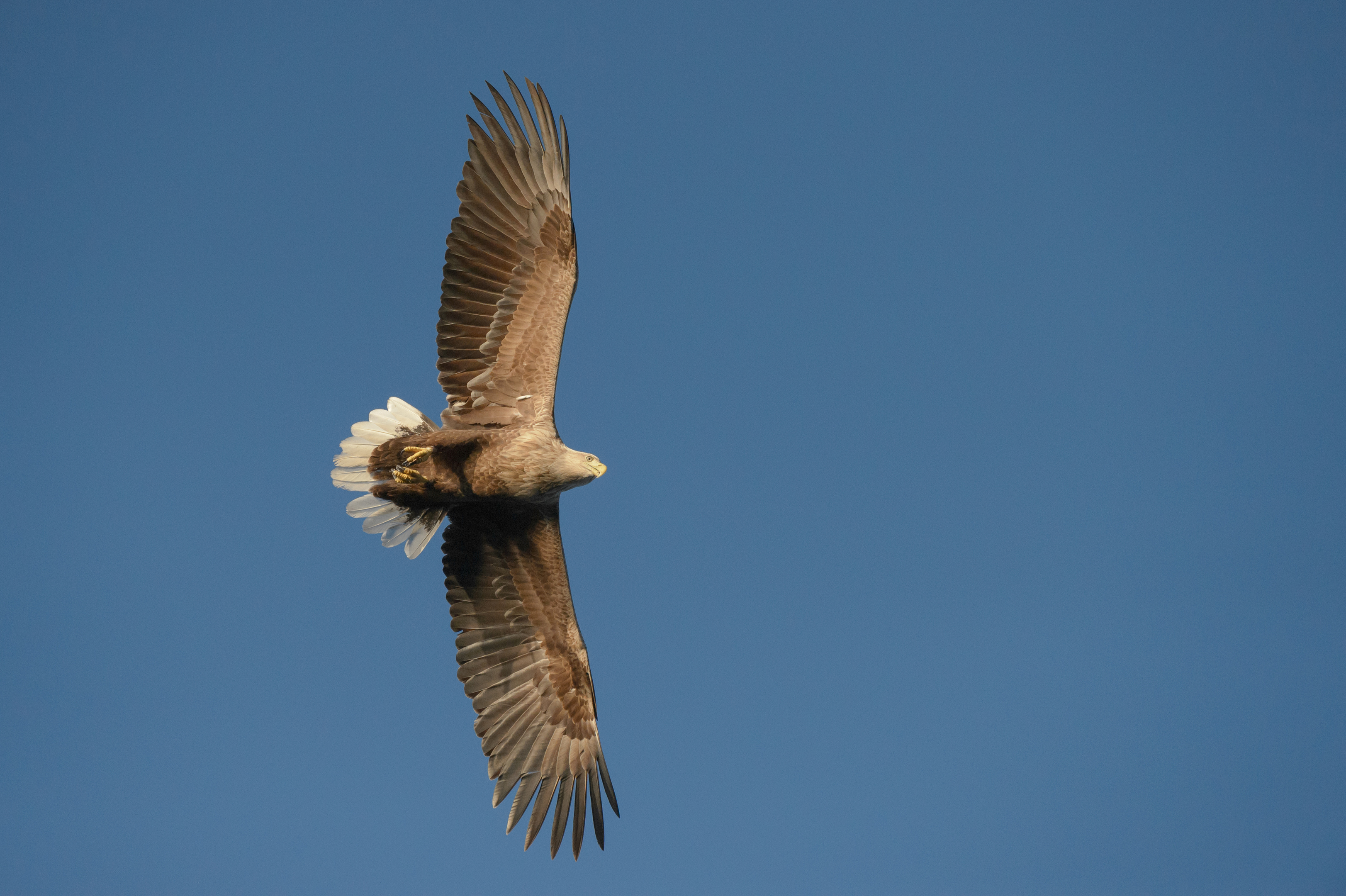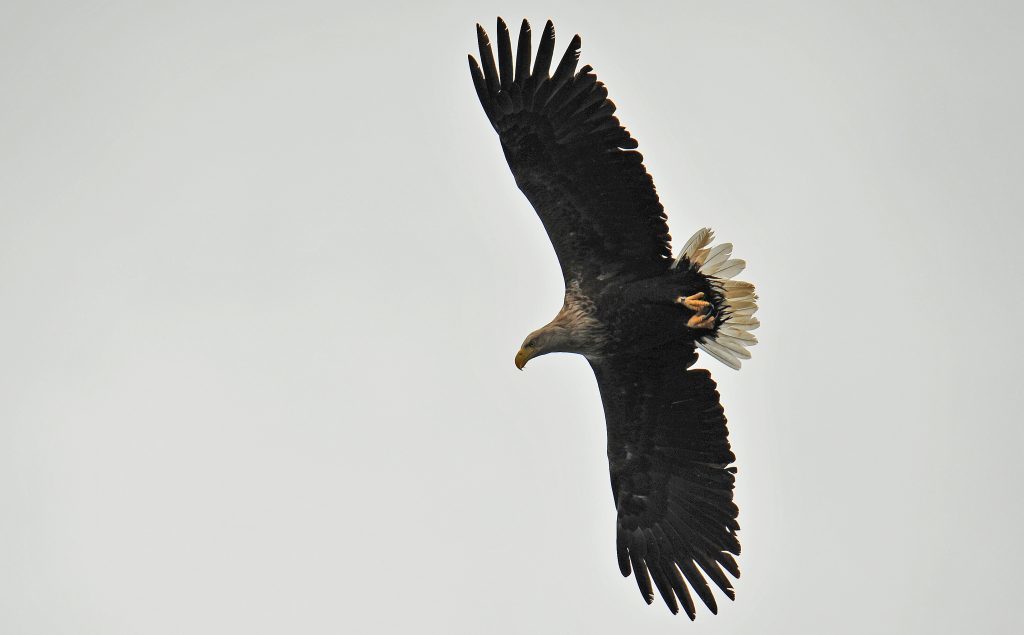A large bird appeared over the tree tops by Tentsmuir beach in north-east Fife. “Sea eagle,” I screamed excitedly. “But in Dundee we get lots of seagulls,” replied my confused 19-year-old daughter, Laura, who is a first year university student there.
A verbal misunderstanding which once dawned resulted in her collapsing into fits of laughter. But this was no time for a sense of humour because sea eagles are rare, so I ignored her giggles and concentrated on the eagle through my binoculars as it flew along the forest edge.
The eagle flapped on large lazy wings, its white tail clearly visible as it veered and wobbled only a few feet above the tree tops. It was a fantastic sight, but what gave me even more satisfaction was seeing other beach walkers stopping to watch the eagle. This was clearly a bird that impressed – and no wonder, given its huge seven foot wing span. This magnificent eagle was connecting people with nature and its wild beating heart; a truly priceless thing.
It is estimated that the now well-established sea eagles on the west coast of Scotland generate many millions of pounds to the local economy from tourists. There is no reason why these Fife sea eagles, which originate from the recent reintroduction scheme, can’t do the same for the east coast. When conservation success stories also benefit local communities, then everyone wins.
Tentsmuir is certainly a good place for sea eagles and I imagine the plentiful supply of rabbits living in amongst the sand dunes provide one of their staple food items.
We were rather fortunate to spot the sea eagle because when walking along a beach my eyes tend to focus down towards my feet as I search for sea shells. I never cease to be amazed by the sheer abundance of molluscs that live buried in the sand of our coastal waters and to me their empty half-shells are like enchanting jewels.
My favourite – and the most numerous – are surf clams, or trough shells as they are sometimes known, which litter Tentsmuir like confetti. The semi-concentric rings on their pale shells are so fine and delicate that they are one of nature’s wonders.
On this visit to Tentsmuir, razor shells were especially numerous. Razor shells live in vertical burrows around the low tide mark and when submerged two small siphons poke through the sand to filter-feed upon tiny marine organisms. Should danger approach, they use the power of the muscular foot at the bottom end, combined with the sharp spade-like elongated shell, to quickly bury deeper into the sand.
Sandy beaches may lack the diversity of species found on rocky shores, but this is more than compensated by the sheer abundance of those that live within this hidden, three dimensional environment. These sand creatures thrive in one of the toughest places imaginable, continually pounded by wild storms and scoured by surging tidal currents. They are true survivors.
Info
In the last few years sea eagles have started to breed in eastern Scotland. Including the west coast population, which was also reintroduced, there are now over 80 breeding pairs in Scotland.











